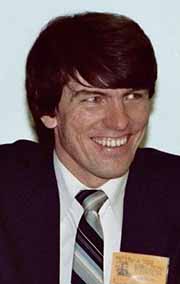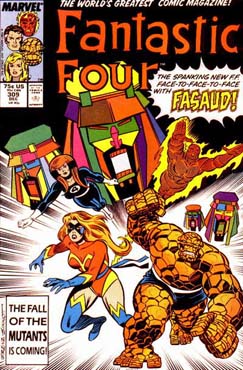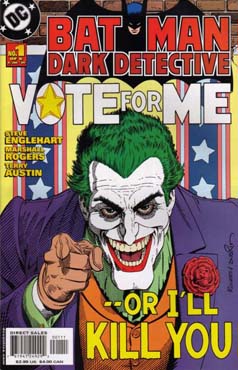Steve Englehart part 3: Back to Marvel
By Philip Schweier
October 22, 2025 - 08:00
In 1983, as the independent market was taking off, Englehart brought his creator-owned property, Coyote, to Marvel, where Jim Shooter had been named editor-in-chief. “They put Shooter in charge because he could make the trains run on time. People had been missing a lot of deadlines and they needed someone who could crack the whip.”
 |
| Jim Shooter, c. 1982 |
“Also, you couldn’t use the word ‘super-villain,’” says Englehart, “because nobody actually says the word ‘super-villain.’” Despite being told not to argue with Shooter, Englehart suggested that within the Marvel Universe, people would distinguish between the guy who robs a liquor store and Doctor Doom, and there would be two different words to describe those people. “That made sense to Jim, and after that you could use the word ‘super-villain’ again.”
During this time, Englehart crossed company lines, writing such titles as Green Lantern and West Coast Avengers. In 1987, Englehart took over writing the Fantastic Four, returning the characters to their roots, when they were the first super-hero team, making it up as they went along. “Reed and Sue had been saying for 20 years they needed to take care of their kid, so I sent them off to do that. Let’s put Ben in charge with some new people, let’s see how that works.”
 |
“My two stints in the ‘70s and ‘80s ended when they did something I didn’t think was the right thing to do. But they were in charge, I was just the hired hand, but I had my opinions as to what I thought Marvel should be, and for a long time Marvel was what I thought it should be. I got to do what I wanted and it sold and everybody was happy. But the guys upstairs were making decisions at that point, so…”
In the 1990s, Englehart worked for Malibu Comics, which Marvel bought in 1994. In 2000, editor Tom Brevoort asked Englehart to incorporate Malibu’s characters into the Marvel Universe. Englehart explained that he would need a double-sized book, to tell the story and introduce the characters and their respective personalities. Brevoort responded that there was no artist capable of producing 34 pages a month, nor were fans interested in the work of an artist who could draw 34 pages a month.
 |
| Englehart, Rogers and Austin reunited for a limited Batman series in 2005. |
For instance, Englehart has a third Batman series in mind. “Jim would like to do that, and said DC was going to make that happen. So I started working on it, but then had to ask, ‘Why aren’t you working on it?’ and he said, ‘Well, we laid off 30% of our staff, things take longer.’”
Englehart also cites evolving business methodology in the comics industry, making it more bureaucratic than it was 40 years ago. “There’s a process where people do cost analysis benefits, so it’s a different business. I understand that. I think there’s a good chance you’ll see the third Batman at some point.”
Next week: DC vs. Marvel
Related Articles:
Steve Englehart part 4: DC vs. Marvel
Steve Englehart part 3: Back to Marvel
Steve Englehart part 2: Batman and the Justice League
